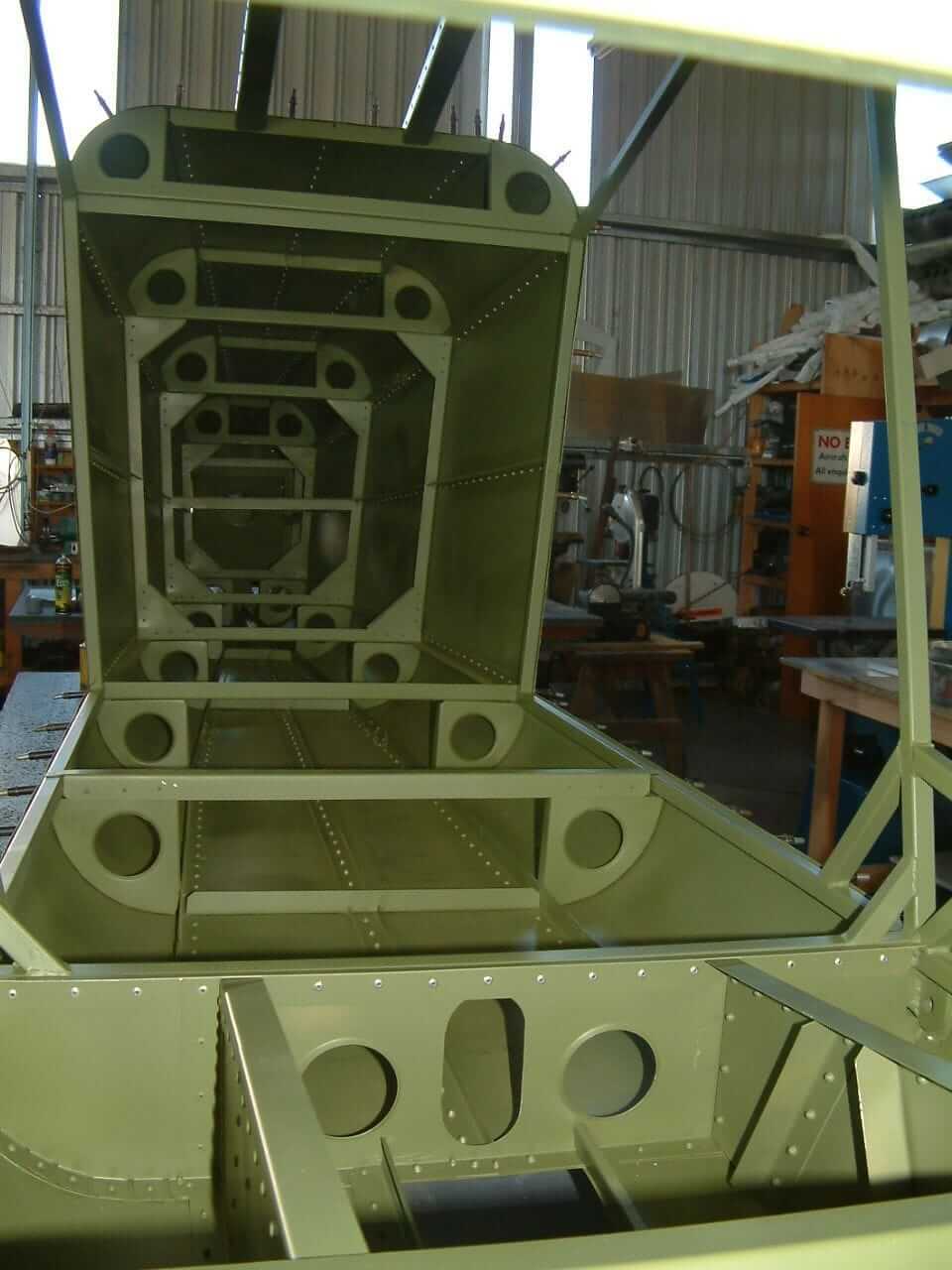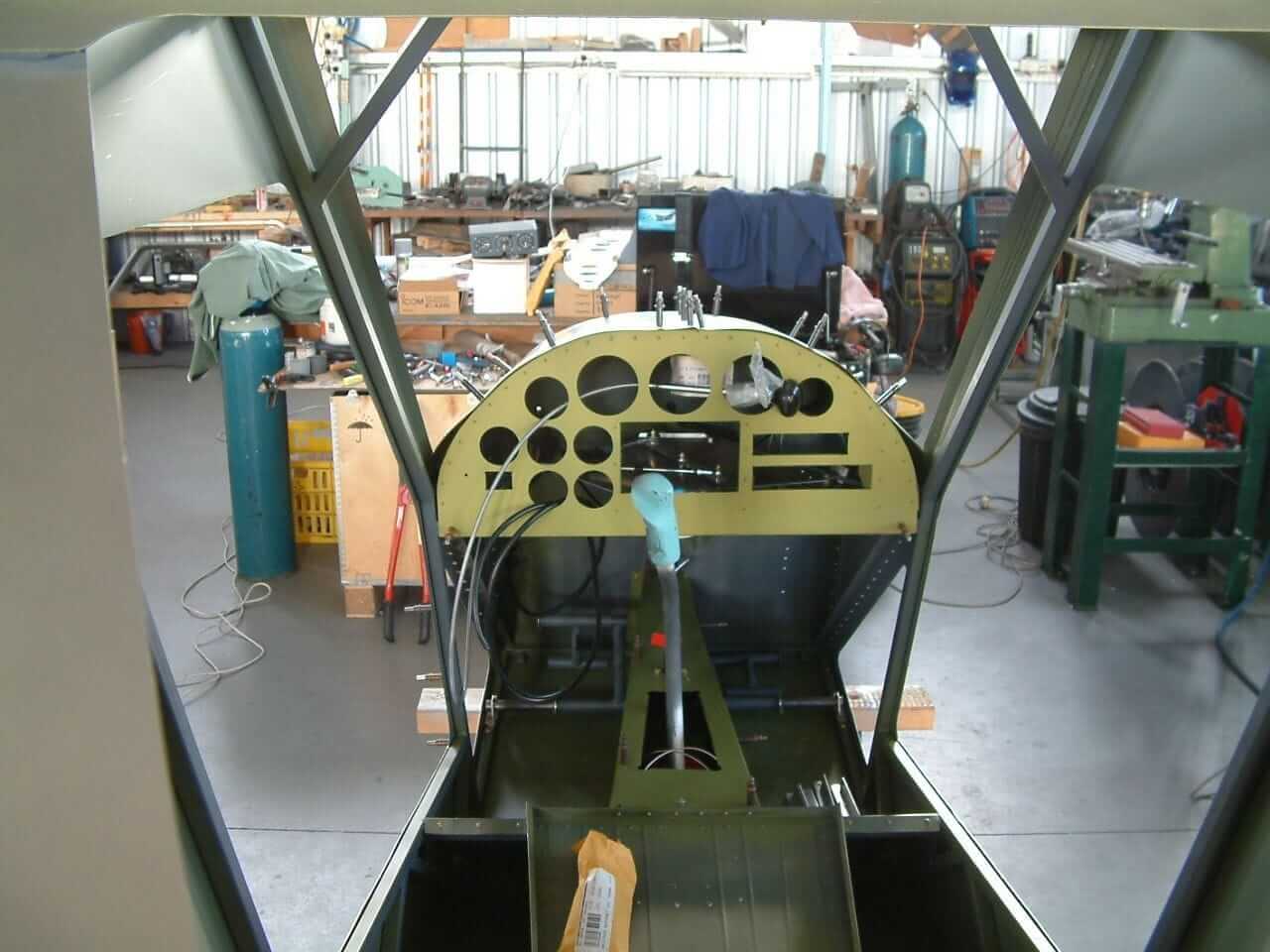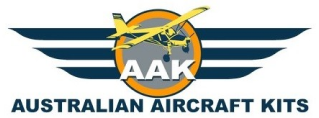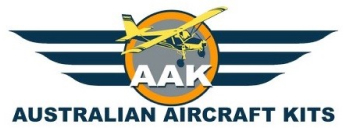Design Concept Construction Kit
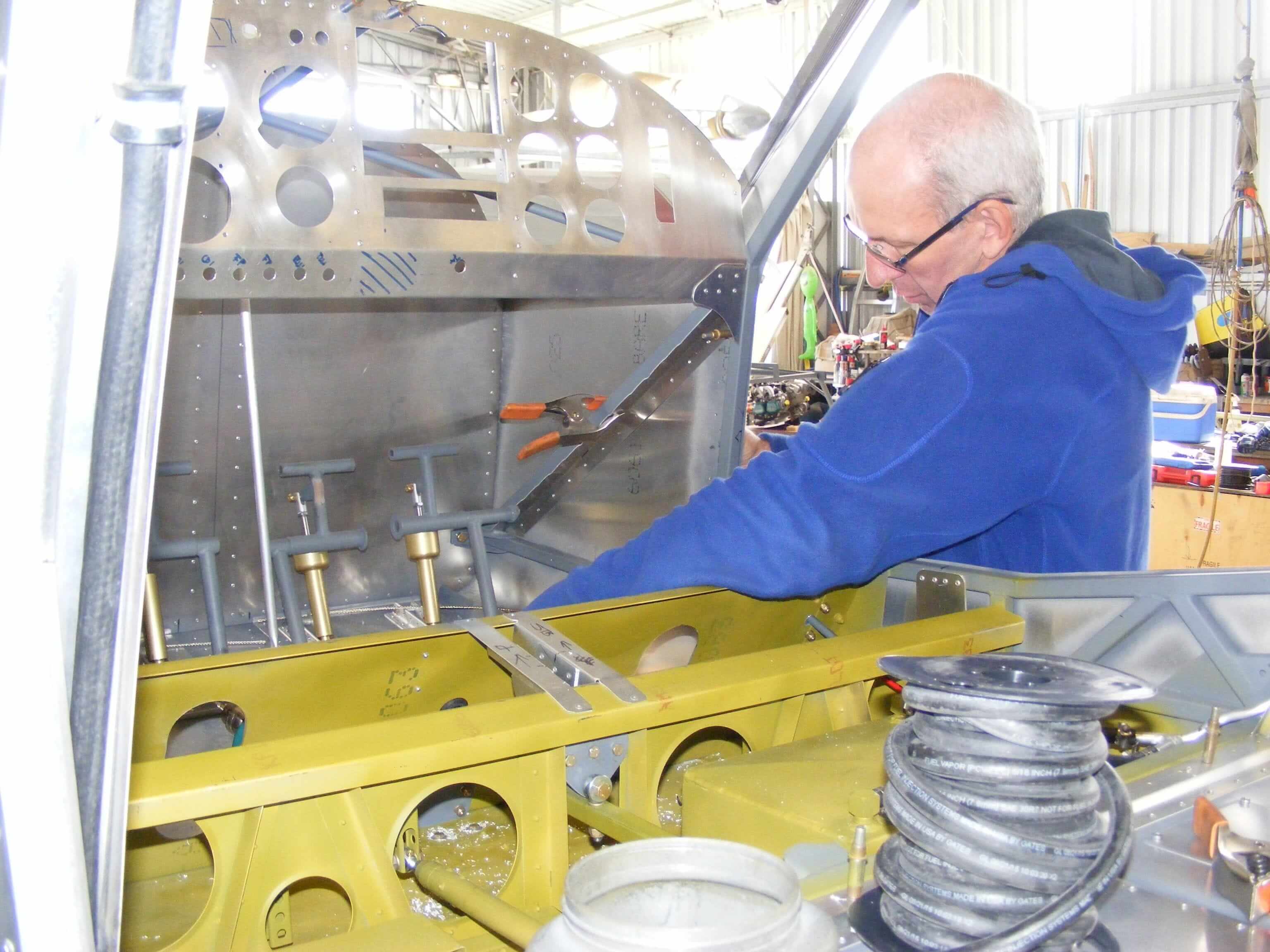
Steve working on cabin fitout on his HORNET STOL aircraft
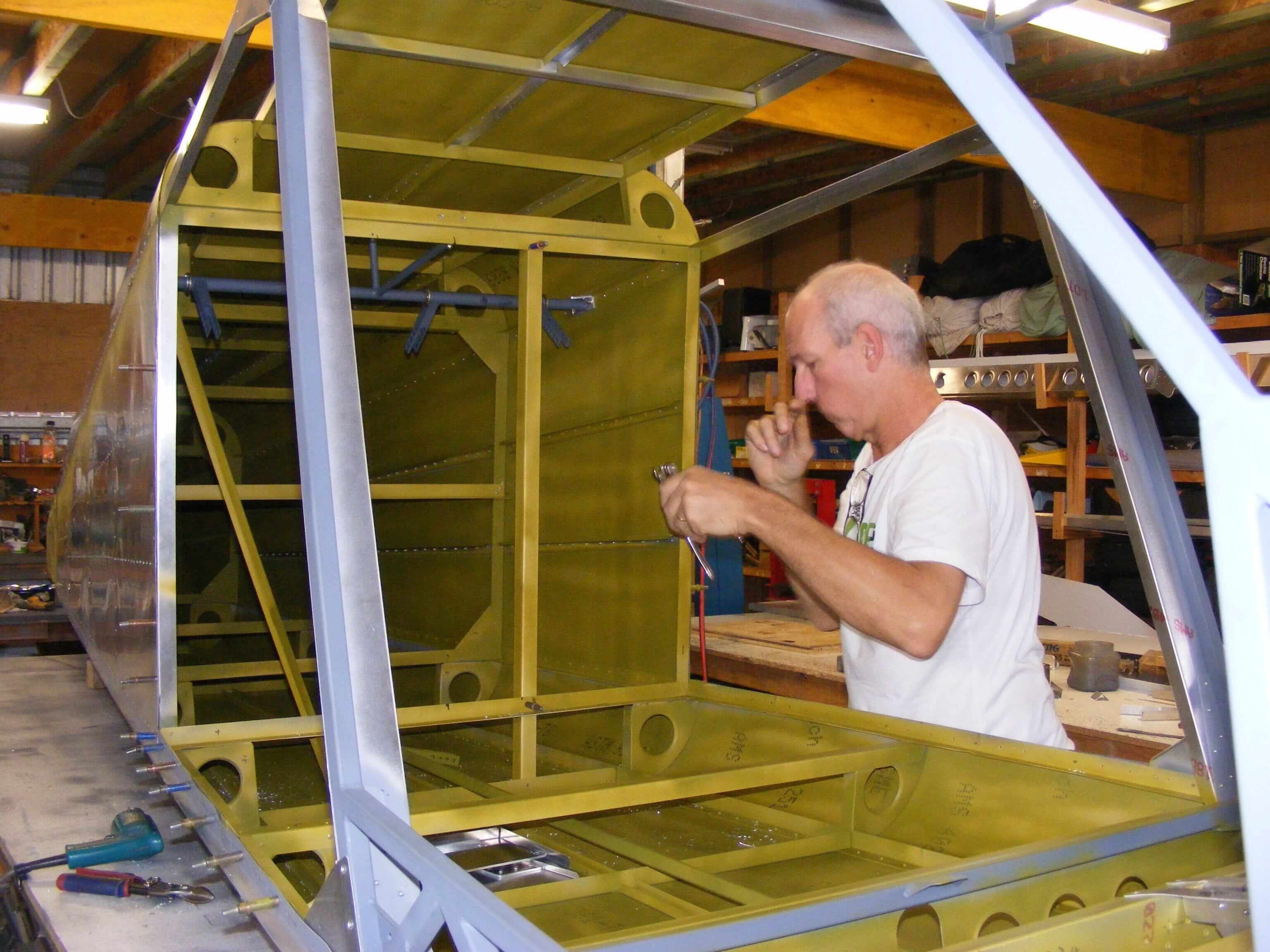
Fuselage assembly on Steves Hornet STOL airframe
THE DESIGN, CONCEPT AND CONSTRUCTION,
First of all, AAK aircraft have been designed in Australia to resist the harsh outdoor environment of Australia and the rugged operating environment they are exposed to.
Traditional and proven materials such as chrome molly tubing and plating 4130N grade and 6061T6 & 2024T3 alloys are used in the entire construction of the aircraft. All materials and processes used are certified and obtained from recognised Australian or Overseas companies. All components and parts for all AAK Aircraft are manufactured at AAK Taree NSW Australia.
Fuselage.
is designed built around a steel safety cage centre section.
Alloy skins are joined in a conventional riveted method to the centre section fully welded steel cage and reinforce the centre fuselage with the wing- , strut-, undercarriage- and engine mounting points all built into the steel centre structure. A semi monocoque alloy stringer and stressed alloy skin construction makes up the strong tail section of the fuselage. All components such as wings, rudder, elevators etc. are removable for transport, storage or repair.
Cockpit area
The pilot and passenger area has been designed for maximum safety and provides both the pilot and passenger with superior visibility. The fuselage has been tailored for big pilots. It is 1100mm (42 inches) wide and 1200mm (48 inches) high internally, fitted with large windscreen and 3 removable doors / emergency exits. The cargo area is very large and can be loaded with up to 45kg (93pounds). The piot and passanger are seated on adjustable / fixed and removable seats.
Wings,
are built in a proven alloy rib and alloy spar method, covered with stressed alloy skins and fitted with self contained pressure tested alloy fuel tanks containing 60L each per wing. The wings are braced by two strong struts to withstand very high loads. The wing design is a high lift wing airfoil with conventional flap and aileron or Flaperons such as on the Flamingo.
All metal aileron and flaps,
are designed for superior effectiveness in flight and transitioning and docile, controlable and forgiving stall behavior of the aircraft at critical speeds and attitudes. The ailerons and flaps are directly controlled from the centre fuselage via control mixer through pushrods and are quickly accessible for checking function and safety.
Control system,
The “push-pull rod” system is made from high grade chrome molly steel tubing, assembled with standard bearings and rod ends for low maintenance and quick and easy replacement if required. The Hornets push-pull rod control systems deliver smooth feedback from the control surfaces and allow for optimal adjustment of travel ratios on the controls. All controls are easy and quickly accessible for inspection or maintenance as required.
Elevator and rudder
have been designed extra strong, to sustain the harsh treatment of being fitted at the tail end of the aircraft, withstanding impact and exposure to high grass, rocks and sticks, dust, sand and other forms of propeller wash induced damage. The control surface area is very large and will surprise with its responsiveness and agility when flying or taxing.
Power plant
For the HORNET STOL after experimenting with several different engine units in the field it was quickly established that the ROTAX series of 912 ULS 100hp (LSA approved) and the 914 Turbo 115hp and 915 (LSA approved) engines provide the best power to weight ratio combined with great reliability and low fuel consumption at 15-22 ltr/hour (on MOGAS or AVGAS). The Lycoming 235/115hp and 320/ 360 /150hp/180hp have recognized reliability and are also a suitable power plant for the Bushman aircraft with a fuel consumption of 25-37 ltr/hour (AVGAS only). Engines are optional and firewall forward kits are provided and installed as requested. Quotations on request. View specification and performance data.
The airframe Kit from Australian Aircraft Kits
Let’s split an aircraft kit in to two Kit items for a clear understanding: the Airframe Kit and the Firewall forward kit.
The Airframe Kit
The airframe kit, consists of all parts required to assemble and build all components such as control surfaces ( Aileron , Flaps , Elevator , Elevator stabilizer, Rudder and stabilizer, 1x RH Wing and 1x LH wing, a set of wing struts, all parts for the fuselage from Firewall aft to the tail section including the main undercarriage and tail undercarriage. The airframe kit also includes all items for the flight control system and pedals, wheels & brakes as well as seats and seat belts, main and cargo door assemblies, windscreen material, hardware & fasteners such as all the rivets, bolts ,nuts, and spacers, washers etc… for completion of all assembly tasks required to build the airframe or any component. All parts are prefabricated, pre-cut, pre-formed, welded, or already part of an assembly and partially even pre-drilled for ease of locating important construction stations & crucial angles during the build process. All parts are marked with a P/N number. These are used as identification of the actual part or skin or control rod etc… and as well to cross-reference to the Builders manual and Assembly drawing of the item or component being built. The Builders manual very clearly progresses through all assembly stages and processes for the completion of all components, wings , tail feathers, Ailerons and flaps, control system, Undercarriage assembly, Fuselage and much more. It gives detail to the basic tooling requirements as well as little tricks here and there on how to improve the finish to a certain construction and build sequence for a professional looking end result. The manual guides through the rigging of all components at the end of airframe assembly to the point of a full assembled airframe awaiting the firewall forward parts to be assembled for completion. Typical build time for a experienced builder of an airframe kit is 400 hours , for a first time builder it may be 600 hours+.
Items not included in the airframe kit are:
Aluminium Primer for all internal surfaces before and during assembly, as this is a decision of the builder to use with or without. We highly recommend the use of a suitable and user-friendly primer for all assemblies throughout the construction of the airframe on all internal joints , surfaces, skins and assemblies. Keep in mind this adds weight as well but protects your investment..!! the airframe kit does not have any electrical items other than Fuel level gauges in the kit , no battery, no wiring harness, no switches, no instrumentation, no radio, no aerials etc…this is up to the individual builder and his chosen system requirements and could be part of the firewall forward Kit supplied. There is no External Paint and fininsh provided. Decals and rego numbers, instrument panel labeling, warning placards can be supplied on request.
The Firewall Forward Kit:
The Firewall forward Kit contains , the chosen power plant such as a ROTAX 912S 100hp or a 914UL 115hp or a 915iS 145hp engine etc..a suitable engine mount for the chosen engine, Engine mounting hardwear, oil tank, Radiators for oil and coolant , mounting hardware for radiators, an exhaust system and mounting hardwear, a propeller, (recommendations here) would be either a WARP Drive propeller 3 blade ground-adjustable or an Airmaster propeller suitable to the engine power output and Airframe with a 3 blade constant speed unit. Further on the firewall forward Kit contains the wiring harness to link engine and systems to the instrumentation , engine control items such as regulators, throttle, choke cables, throttle linkages, Carby heat , Air box, Air filters, fuel system requirements such as Water gascolators, fuel lines , header tanks as required, venting systems, fuel filters and pumps and valves as well as fuel cocks, propeller spinner, Cowling construction kit, instrumentation and engine monitoring gauges, VHF radio and aerial , radio wiring harness for intercom and headsets, battery leads and battery, switches, relays, circuit brakes and fuses, landing light, LED lights for instrument panel low fuel warning lights and sender, 12V outlets and assorted items required for completion of Firewall forward install. Typical installation time for a firewall forward for a semi talented builder is 200 hours.
Pricing on Firewall forward kits on request only.
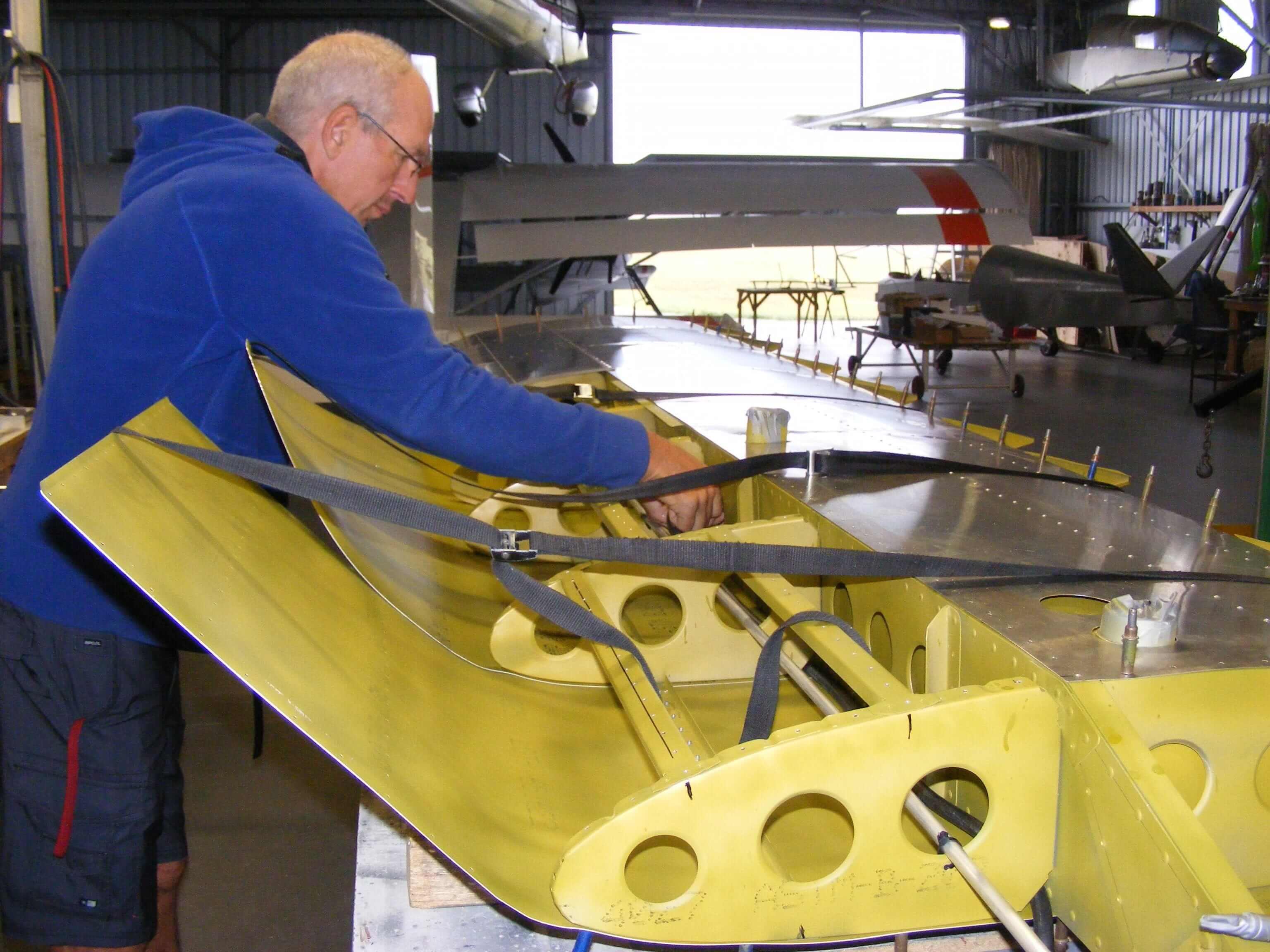
Hornet Wing assembly in progress.

Here we have Steve preparing the nose skins on a RH wing leading edge for final assembly and riveting.
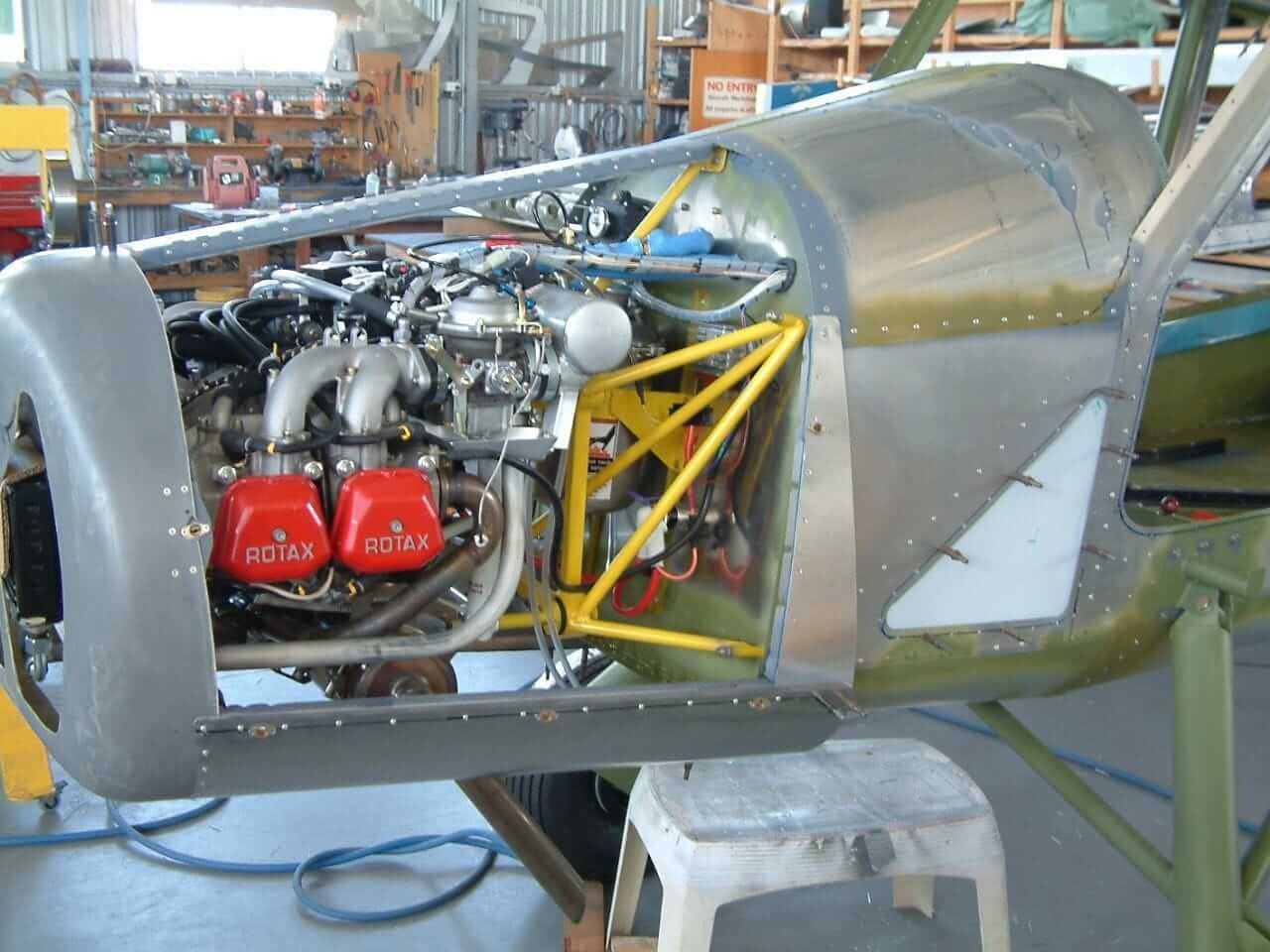
Firewall Forward installations of Rotax 914 Turbo Enigne (red rocker covers) and Rotax 912S ( green rocker covers) Hornet Cub with trailing link suspension.
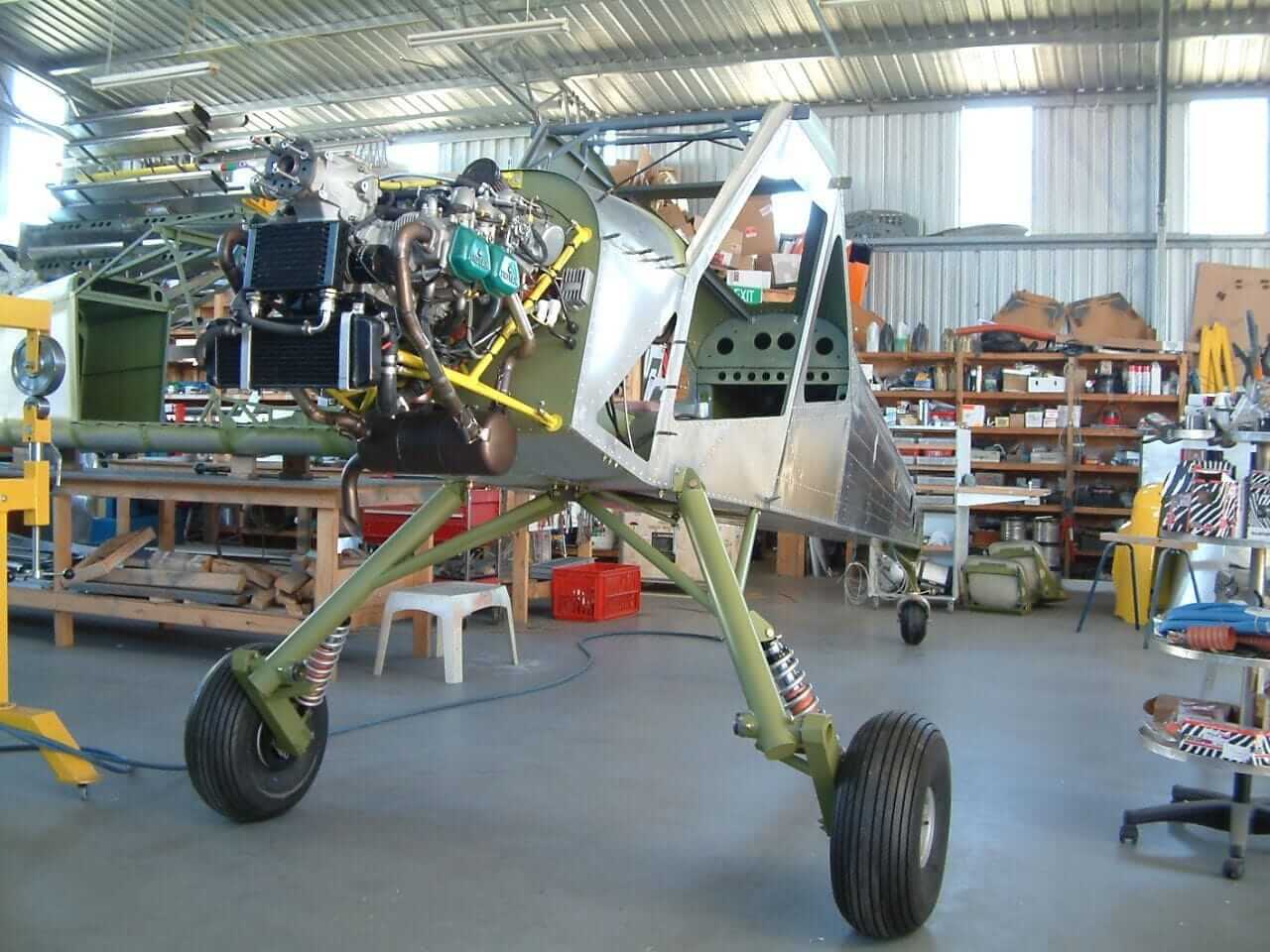


Firewall forward installation Rotax 915is with (blue rocker covers) and CSU 3 blade Airmaster propeller.



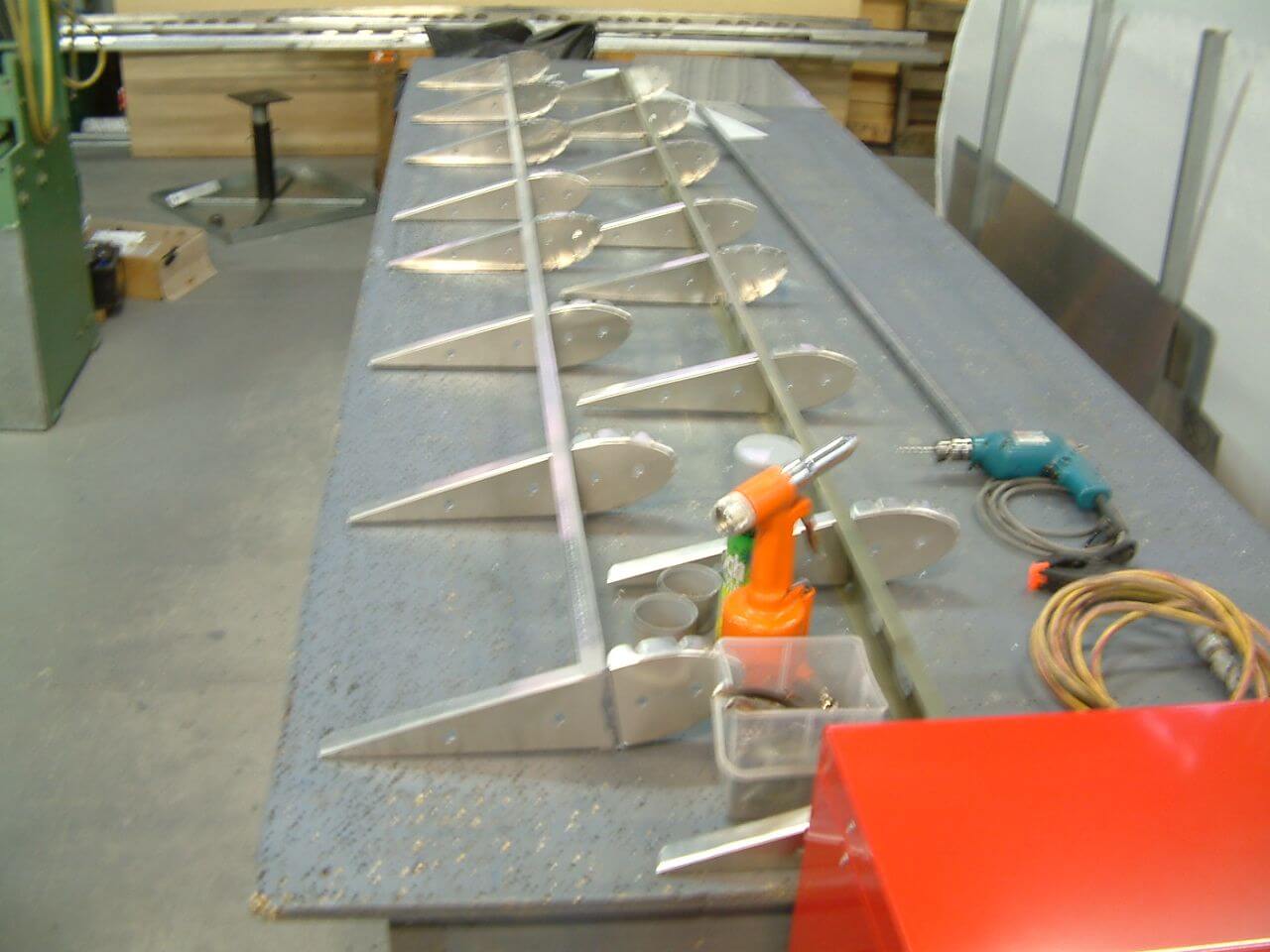

A long flat bench for assembly of all components is requierd. As well as the basic handtools and preferably a pneumatic hand riveting gun is essential.
Basic hand tools,
Hacksaw, drill bit set in imperial and metric, metal files all shapes, de- burring tools, rulers, tape-measure, Hand drill, sheet metal snips ( tin snips) LH and RH above material is best, Screw drivers, riv-nut pliers, long-nose pliers, set of spanners imperial 1/4 to 3/4 and metric 7mm to 22mm and a shifter/spanner, small hammer and side cutters, hand riveter and most importantly a pneumatic rivet gun, a reliable source of air pressure for maybe an air-drill, hand blower and yes – the air-rivet gun. A set of hex-keys imperial and metric as well as a smaller socket and ratchet set comes in handy….clecos and pliers are supplied in the airframe Kit in limited numbers.
RH picture
A view into the tail and front section of a Fuselage showing the many individual parts making up the shape of the stressed skin assembly also called monocoque structure. This joins the steel center section cage. Some green primer to preserve the internal surfaces. All built on a flat and true level bench.
